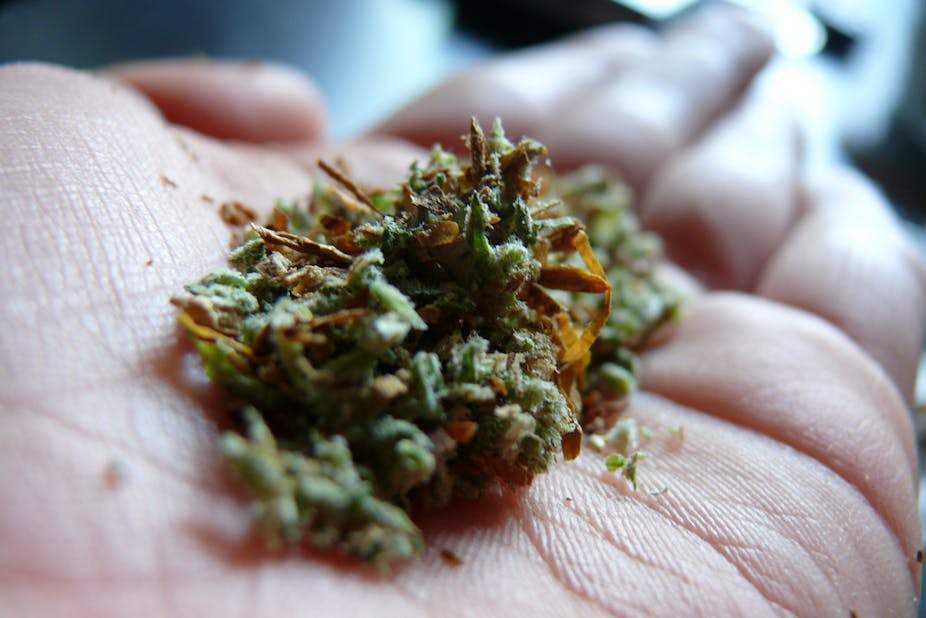There’s a modern myth that marijuana (cannabis sativa), in its natural form, is effective at both preventing and treating cancer. This myth has become ever more popular with the gradual approval of marijuana for recreational use in many places, most notably in some American states.
This misplaced belief most likely stems from the numerous studies that have shown that select chemicals found in marijuana have some anticancer properties. But it misses many important aspects of pharmacy that go beyond just the chemicals in the plant.
Marijuana, whether smoked or ingested, is not effective because dose and method of delivery are just as relevant to anticancer activity as the drug itself. And the damage caused to the body from long-term marijuana use may negate any perceived health benefits.
Cannabinoids and cannabidiols
Marijuana is the dried and crumbled leaves of the cannabis plant. The leaves can be rolled into cigarette- or cigar-like devices or smoked in a pipe. Alternatively, it can be mixed into food and baked; popular food stuffs include brownies and biscuits or cookies.

Like tobacco leaves, marijuana contains many hundreds of different chemicals. Two chemicals from the cannabinoid family are of particular interest as anticancer drugs, delta-9-tetrahydrocannabinol (THC), which is the chemical that gives marijuana its psychoactive effect, and the related compound cannabidiol.
In bench top, petri dish-like experiments, these chemicals have been shown to kill or slow the growth of different cancers, including in one study, colorectal tumours and leukaemia. Some studies have also shown effectiveness in animals models, but all these used the pure chemicals as injectable solutions.
Unfortunately, anticancer activity in the laboratory doesn’t always equal similar activity in humans. More than 80% of drugs fail human cancer clinical trials even though they have been found to be curative in animals.
In addition, if marijuana itself was able to cure cancer in humans then there should be a lower incidence of cancer in groups of long-terms users. Instead, it appears that marijuana use may increase your likelihood of cancer. While this hasn’t been firmly established yet, regular marijuana use definitely does not lower your risk of cancer.
Importance of the dosage form
Even if the cannabinoids are found to be anticancer active in humans, the means by which the drugs area administered is just as important as the compounds themselves.

Pharmacists call different formulations of drugs dosage forms. Examples of dosage forms include tablets and capsules, creams and lotions, and solutions for injection. Some drugs work equally well when administered in different dosage forms, but some drugs, especially cancer drugs, are only effective when injected directly into the blood stream.
Human lungs are not designed to absorb chemicals from the air and while 9-THC is sufficiently absorbed from smoke to give its psychotropic effects, the inhaled dose may not be high enough to be effective against cancer.
Alternatively, when ingested, the anticancer chemicals will be rapidly absorbed from the stomach but may be transported to other areas of the body (like the brain) rather than to the sites of cancer. The active chemicals may also be destroyed by the liver through metabolism before they attain a high enough dose in the blood stream.
More problematic is that how and where the marijuana is grown, and how it is prepared, can affect significantly the amount of active chemicals found the plant. Variability in the concentration of active chemical in many plant-based complementary medicines remains a huge issue in their application.
Dangers of long-term marijuana use
Just because a product is natural, or organic, does not mean it is completely safe. As described earlier, marijuana use may increase the chance of cancer, but it can also induce the same chronic effects that come from smoking any substance.

Long-term marijuana use has been shown to destroy cilia (the hairs in the respiratory tract) and lower the natural antimicrobial protection that we have in the lungs. Marijuana use can only damage health, not improve it.
In the future, the active chemicals from marijuana may enter mainstream medicine for the treatment of cancer. If so, they will be used in high-quality pharmaceutical preparations at the correct dose and in the most effective formulation.
So by all means use marijuana for recreational reasons (if that’s what you are into and it’s legal in your area) or for medically-prescribed pain relief, but don’t use it for the purpose of preventing or curing cancer.

